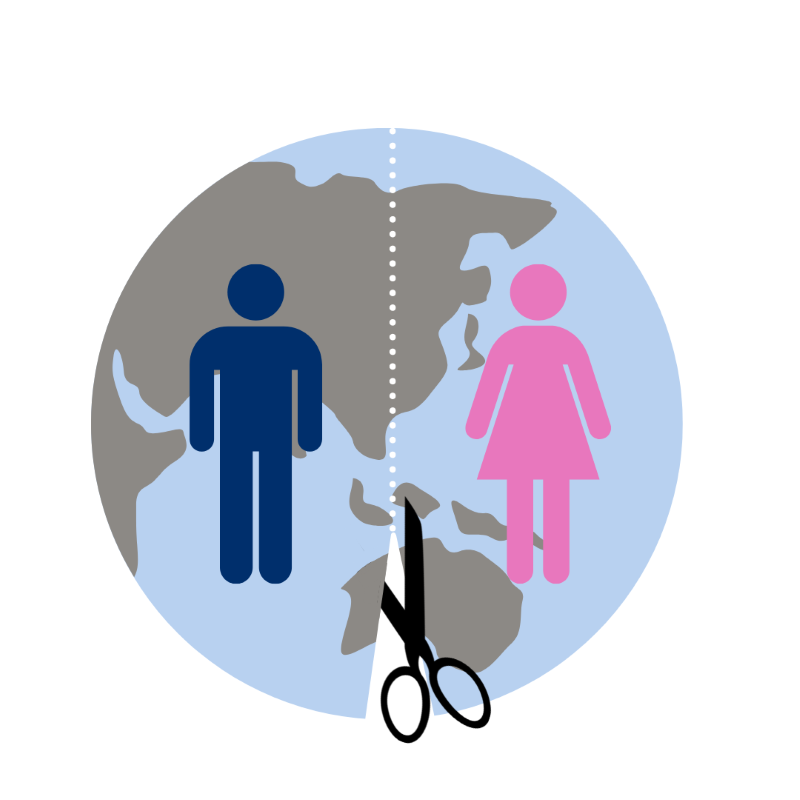We Can Only Fix What We Know About – Why Sex-Disaggregated Data in Pharmaceutical Systems is Crucial
By Lynn Lieberman Lawry, Senior Gender Advisor
Collecting, analyzing, and reporting data is important for evidence-based policymaking, advocacy, and accountability. But without adopting the more holistic approach of sex-disaggregated data, we only understand half the population. Gender equality and female empowerment are important considerations in USAID MTaPS programming and pharmaceutical system strengthening (PSS) to advance the program’s mission of helping low- and middle- income countries strengthen their pharmaceutical systems to ensure sustainable access to and appropriate use of safe, effective, quality-assured, and affordable essential medical products and pharmaceutical services.

What Is Sex-Disaggregated Data?
Sex-disaggregated refers to data on males and females collected and analyzed separately. This is different from data collected by gender because this data is limited to biological differences and does not reflect gender differences of men, women, trans, or non-binary individuals.
Why Is Sex-Disaggregated Data Important?
Collecting sex-disaggregated data has both immediate and long-term benefits. Disaggregating data helps us understand how sex hormones, for example, contribute differently to clinical presentation, progression, and outcome; immunity to diseases; vaccines; and the side-effects of medicines in males and females. This helps us standardize care by sex instead of using a one-size-fits-all approach, and when data is continually reviewed and updated, quality and equity of care is improved for both males and females.
Pregnancy Is a Sex-Determined Factor
Sex determines one’s ability to become pregnant. Yet as a sex factor, information relating to pregnancy status is rarely collected as part of sex-disaggregated data or is included in reporting. This has a limiting effect for understanding sex-mediated dynamics of disease, understanding vulnerable groups, and creating appropriate sex-responsive responses. Physiologic or pharmacokinetic changes during pregnancy and lactation affect drug metabolism and elimination. Vaccines and other pharmacological agents have different effects on pregnant women than on non-pregnant women. Some diseases are more severe during pregnancy, while others affect the unborn child. Collecting and analyzing sex-disaggregated data and data on pregnancy status and gestational age is therefore important to limit morbidity and mortality.
Sex-Disaggregated Data and Pharmacovigilance (PV)
Males and females are disadvantaged differently. It is critical to collect sex-disaggregated PV data to assess how PV is impacted by sex differences in drug absorption, distribution, metabolism, and elimination. For instance, females have a higher number of adverse drug reactions and they require more related admissions to hospitals, but men experience more serious and fatal events. Without such data, it is impossible to determine safe and effective dosing, surveillance, prevention, and patient information strategies.
Sex-Disaggregated Surveillance Data
More information on sex differences is needed to better understand the limitations and biases of surveillance. The proportion of males and females changes over time. Although it is widely accepted that males and females in populations are roughly equal, this may not be the case. In countries where selective abortion and/or infanticide of females is common, there are more males than females among infant subgroups. Therefore, a finding of more male than female infant cases might not mean that infant males are more affected. Also, as the population ages, the proportion of females increases since males generally have a shorter life expectancy. In addition to adjusting analysis of male-female differences for age distributions—particularly at the youngest and oldest ages—it is crucial to investigate changes in life expectancy in light of major health emergencies such as COVID-19, which has led to greater loss of males.
Sex-Disaggregated Data and Emerging Infectious Diseases
Sex-disaggregated data is important in outbreak response for targeting communication to people with the greatest need. This data helps us understand how diseases affects pregnant individuals, females versus males, and how supply chain management must take into account sex-mediated drug metabolism differences to adjust and forecast medicine supply requirements differently. The COVID-19 pandemic has revealed why sex-disaggregated data is important.
What Does This Mean for PSS?
It is paramount to advocate for sex-disaggregated data for all PSS tools and frameworks. There is a need to review the capacity of ministries of health, other key ministries, and facility-level staff to collect and use sex-disaggregated data to inform pharmaceutical policies, regulations, protocols, and service delivery. Based on this review, developing the capacity of staff at all levels is important for collecting, analyzing, using, and monitoring sex-disaggregated data. There is also a need to ensure sex-disaggregated data collection, analyzing, and reporting in facility and central reporting mechanisms and processes.
Crunch the Numbers
To develop sex- and gender-responsive programs that are necessary to evaluate risks to improve health and well-being, it is not enough to just collect the data: crunch the numbers, analyze, and report this data on both males and females with a focus on pregnant individuals. Then, use this data to enact programmatic and policy changes to improve health equity and limit morbidity and mortality.